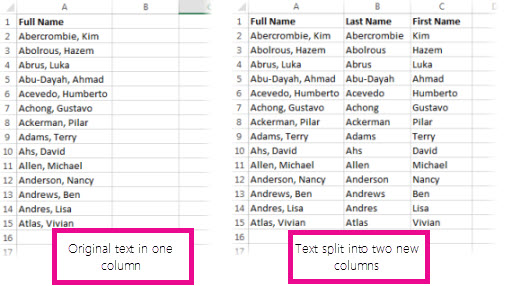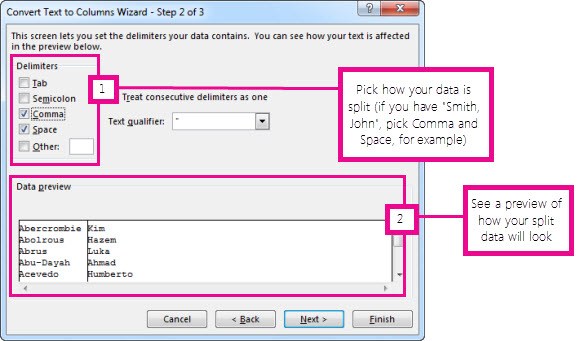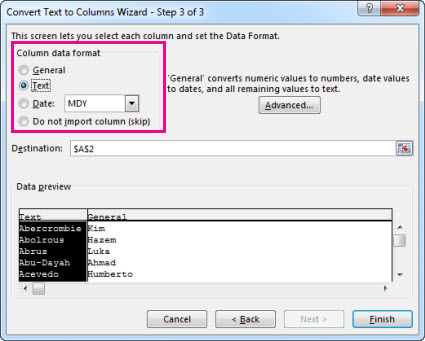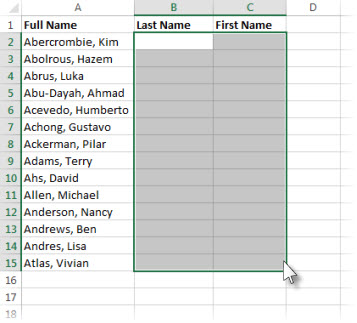You
can take the text in one or more cells, and spread it out across
multiple cells. This is the opposite of concatenate, where you can combine text from two or more cells into one cell.
For example, if you have a column of full names, you can split that
column into separate first name and last name columns, like this:

Go to Data > Text to Columns, and the wizard will walk you through the process. Here’s a full breakdown of how it works:

Go to Data > Text to Columns, and the wizard will walk you through the process. Here’s a full breakdown of how it works:
-
Select the cell or column that contains the text you want to split.
Note: Select as many rows as you want, but no more than one column. Make sure there’s enough empty columns to the right so nothing over there gets overwritten. If you don’t have enough empty columns, add them.
-
Click Data >Text to Columns.

-
This starts the Convert Text to Columns Wizard. Click Delimited > Next.
-
Check Space, and clear the rest of the boxes, or check Comma and Space if that is how your text is split (Smith, John, with a comma and space between the names). You can see a preview of your data in the Data preview window.

-
Click Next.
-
In this step, you pick the format for your new columns, or
you can let Excel do it for you. If you want to pick your own format,
select the format you want, such as Text, click the second column of data in the Data preview window, and click the same format again. Repeat for all the columns in the preview window.

-
Click the
 button to the right of the Destination box to collapse the dialog box.
button to the right of the Destination box to collapse the dialog box.
-
Select the cells in your workbook where you want to paste
your split data. For example, if you are dividing a full name into a
first name column and a last name column, select the appropriate number
of cells in two adjacent columns.

-
Click the
 button to expand the dialog box, and then click Finish.
button to expand the dialog box, and then click Finish.





